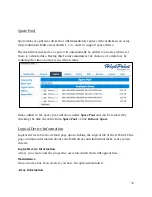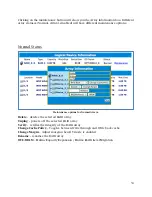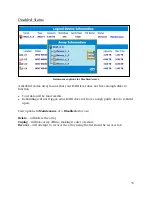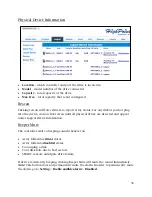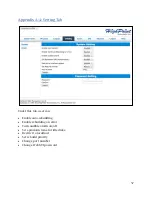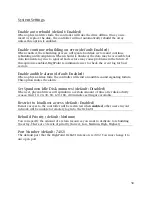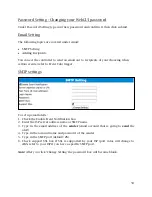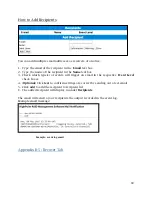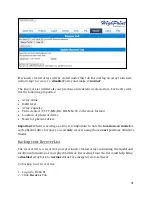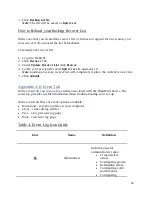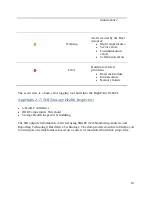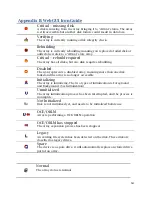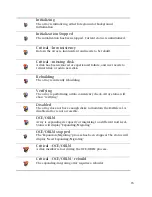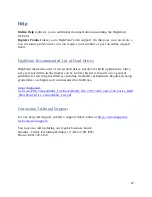
66
Appendix C: RAID Level Quick Reference
Type Description
Min.
disks
Usable
space
Advantage
Disadvantage
Application
JBOD
Just a bunch of
disk
1
100%
Each drive can be
accessed as a single
volume
No fault tolerance - failure
of one drive results in
complete data loss
Backup
RAID
0
Disk Striping
2
100%
Offers the highest
performance
No fault tolerance –
failure of one drive in the
array results in complete
data lose
Temporary file,
performance driven
application.
RAID
1
Disk Mirroring
2
50%
Provides convenient
low-cost data
redundancy for smaller
systems and servers
Useable storage space is
50% of total available
capacity. Can handle 1
disk failure.
Operating system,
backup, and
transaction
database.
RAID
10
Disk Mirroring
followed by
stripe
4
50%
High read performance
and medium write
performance with data
protection for up to 2-
drive failures
Useable storage capacity
equals total capacity of all
drives in the array minus
two
Fast database and
application servers
which need
performance and
data protection
RAID
5
Disk Striping
with Rotating
parity
3
67-94% High read performance,
and medium write
performance with data
protection with a single
drive failure
Not recommended for
database applications that
require frequent/heavy
write sessions. Can handle
1 disk failure.
Data archives, and
ideal for application
that require data
protection
RAID
6
Disk Striping
with dual
rotating parity
4
50-88% High read performance,
and medium write
performance with data
protection in case of up
to two drives failure
Not recommended for
applications that require
frequent/heavy write
sessions.
Data archives and
ideal for application
that requires data
protection

